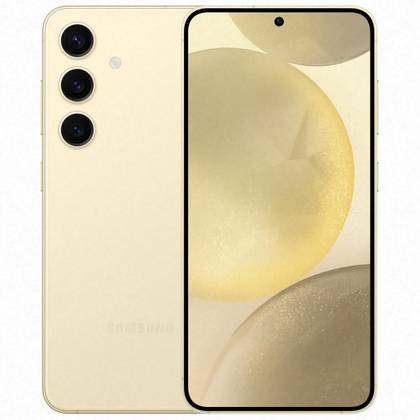The flagship smartphone market follows a predictable cycle.
Samsung’s Galaxy S24 and S25 series were excellent phones. However, they were safe and iterative updates in a market crying out for a leap.
The recent iPhone Air showed Apple is still willing to experiment with bold form factors. It may not be for everyone, but Apple can set trends in the market.
Google is also doubling down on software identity. With the Pixel 10, new features like Magic Cue highlight Google’s on-device AI as the foundation of the user experience.
Samsung must deliver meaningful improvements that justify its premium price.
Here’s a roadmap for what the Galaxy S26 must have to reclaim its crown as the king of Android.
6
Silicon-carbon cells power a real stamina jump
From the S20 to the S25, Samsung has kept a near 4,000mAh lithium-ion battery for six generations. On paper, it looks fine. In practice, users still struggle to go a full day without a charge.
The S26 should break that cycle. Silicon-carbon cells offer higher energy density in the same space. Adopting them could raise the S26’s capacity to 6,000mAh or more without making the phone thicker.
This is a competitive necessity. Brands such as Honor and OnePlus already ship high-capacity silicon-carbon batteries.
Projections suggest single-cell batteries could reach 8,500mAh by 2026. Samsung is reportedly evaluating the tech.
Bringing it to the S26 is plausible and would directly address a persistent user complaint. This would be the most transformative upgrade Samsung could make.
A genuine two-day battery changes how you use the phone. It shifts the focus from managing battery life to simply enjoying the phone.
This foundational improvement would give the S26 a clear advantage that no spec bump can match.
5
Fix shutter lag for good, not with workarounds
Ask any long-time Galaxy user about their biggest complaint, and you’ll likely hear shutter lag.
Samsung’s flagships have suffered from delay and motion blur when photographing moving subjects like kids, pets, or sports.
There are camera tricks to help with the issue. However, the S26 must fix it once and for all by re-engineering the image-processing pipeline.
This is a core software quality issue. The software prioritizes low ISO to reduce noise in auto mode, forcing slower shutter speeds to gather light.
That works for static scenes but fails with motion. A fix would restore trust in the Galaxy camera system and make the camera reliable for the moments that matter.
4
Use next-gen optics for better telephoto images
Samsung markets big zoom numbers, but long-range image quality often degrades outside perfect daylight. Samsung Semiconductor demonstrated All Lenses on Prism (ALoP) for CES 2025.
The S26 should debut Samsung’s next-generation periscope technology. ALoP places the lens elements on top of the prism rather than between the prism and the sensor.
This change allows a wider, brighter aperture in a more compact module. It leverages Samsung’s in-house R&D to create a clear hardware advantage.
ALoP addresses Periscope Zoom’s biggest poor low-light performance from narrow apertures. It also allows a thinner module, shrinking the large camera bump that users dislike.
Users would see clear improvements in zoom shots, especially at night or indoors. Photos would be cleaner, brighter, and more detailed.
With a slimmer design, ALoP would reinforce Samsung’s leadership in camera hardware by delivering real optical gains over inflated megapixel counts.
3
Move from reactive to truly proactive Galaxy AI
Today’s AI assistants are powerful but reactive. They wait for a direct command before they act.
The next shift is a proactive model where the phone anticipates your needs and offers help without a prompt.
Google’s Magic Cue is a blueprint for this. When you text a friend to arrange dinner, the AI infers your intent, checks your calendar, and suggests free time within the conversation.
The linchpin is efficient on-device processing. To maintain trust and privacy, a proactive AI cannot keep sending sensitive data to the cloud for analysis.
For the Galaxy S26, Samsung should turn Galaxy AI into a deeply integrated layer of One UI rather than a handful of isolated tricks.
The NPU must perform consistently in both Snapdragon and Exynos variants for Samsung to stay competitive.
Proactive cues can live inside Messages, Calendar, and SmartThings.
Most importantly, Samsung needs privacy guarantees that contextual data stays on the device, with intent detection and generative tasks processed locally.
2
Adopt Qi2 to unlock a universal magnetic ecosystem
A weakness of the Galaxy S25 is the lack of native magnetic charging. Qi2 is the next generation of Qi and introduces the Magnetic Power Profile.
It offers the same secure snap-on alignment as MagSafe without Apple lock-in. It is an open standard, so any manufacturer can implement it without licensing fees.
Google has already adopted it with the Pixel 10, making it urgent for Samsung to follow. This low-effort, high-reward move would put Galaxy devices on par with rivals.
It would also unlock a large third-party market for magnetic chargers, car mounts, wallets, and battery packs.
This would also lower the barrier for iOS users considering a switch, since they could bring over their MagSafe accessories without starting from scratch.
By embracing Qi2, Samsung can ride the momentum from Apple and Google and give accessory makers a universal platform that lowers costs and expands choice.
Google Pixel 10
- SoC
-
Google Tensor G5
- Display type
-
Actua display
- Display dimensions
-
6.3 inches
- Display resolution
-
20:9
1
Perfect under-display tech for a true edge-to-edge look
The hole-punch camera cutout has served its purpose, but it’s time to move on.
For the S26, Samsung should deliver a next-generation under-display camera (UDC) that hides the selfie lens.
This is a strategic defensive move. Reports suggest Apple will move Face ID sensors under the screen for the iPhone 18 Pro in 2026, leaving only a small pinhole for the camera.
The recently announced iPhone 17 still has a Dynamic Island, so this move would set a clear design benchmark for the next generation of flagship Android phones.
As a display pioneer, Samsung can leapfrog Apple by perfecting a full UDC first and delivering a unified screen.
An uninterrupted, edge-to-edge display would be a strong visual differentiator.
It would add the clear visual wow that slab phones have lacked for years and give users an obvious aesthetic reason to upgrade.
Samsung could turn the phone into a clean canvas for content, gaming, and productivity on a screen that already leads in several display metrics.
Make S26 the phone that breaks the cycle
The Galaxy S26 represents a pivotal moment for Samsung. These five features form a feasible roadmap for Samsung to reassert its leadership in flagship smartphones.
Plus, these features can work together. A larger silicon-carbon battery powers the demanding, always-on computations of on-device AI.
On-device AI helps with the real-time image reconstruction needed for a better under-display camera and computational photography.
A modern, open-standard accessory ecosystem completes the experience.
-
Source: Samsung Your comment has not been saved
- SoC
-
Qualcomm Snapdragon 8 Gen 3
- RAM
-
8GB
- Storage
-
128GB, 256GB
- Battery
-
4,000mAh
- Ports
-
USB-C
- Operating System
-
Android 14 and One UI 6.1
The smallest of Samsung’s 2024 flagships packs possibly the most significant upgrades of the series, with a significantly brighter and 1-120Hz adaptable refresh rate screen, cameras that finally match the S24+, and an even more polished build than the last two years.
-
Your comment has not been saved
- SoC
-
Qualcomm Snapdragon 8 Elite for Galaxy
- RAM
-
12GB
- Storage
-
128GB, 256GB, 512GB
- Battery
-
4,000mAh
- Ports
-
USB-C
- Operating System
-
Android 15 and One UI 7
Samsung’s Galaxy S25 keeps things small without sacrificing power. With a Snapdragon 8 Elite processor, 12GB of RAM, and all sorts of tools courtesy of Galaxy AI, this is everything you expect from a modern flagship squeezed into a relatively svelte chassis.









